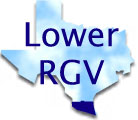| 1.0 | TRAVEL AND TRAFFIC MANAGEMENT |
| 1.5.2 | TSI shall include an Information Access function that allows travelers to access the available information. |
| 1.5.2.5 | Information Access shall provide the capability for travelers to access the TSI information via any of, but not limited to, the following methods: |
| 1.5.2.5(a) | Highway advisory radio. |
| 1.6 | TRAFFIC CONTROL |
| 1.6.0 | ITS shall include a Traffic Control (TC) function. Traffic Control provides the capability to efficiently manage the movement of traffic on streets and highways. Four functions are provided, which are, (1) Traffic Flow Optimization, (2) Traffic Surveillance, (3) Control, and (4) Provide Information. This will also include control of network signal systems with eventual integration of freeway control. |
| 1.6.2 | TC shall include a Traffic Surveillance function. |
| 1.6.2.1 | Traffic Surveillance shall include a vehicle detection function with the capability of accurately detecting vehicles in a real-time fashion. |
| 1.6.2.1.1 | Vehicle detection shall include the capability to determine those vehicles that are HOVs. |
| 1.6.2.2 | Traffic Surveillance shall include a data collect function to provide the capability to collect data for determining traffic flow and prediction. |
| 1.6.2.2.1 | The data collect function shall provide the capability to quickly feedback traffic data to the control processes. |
| 1.6.2.3 | Traffic Surveillance shall include a wide-area surveillance capability to include several jurisdictions. |
| 1.6.2.3.1 | The wide-area surveillance shall gather speed and flow information. |
| 1.6.2.4 | TC shall provide the capability to acquire detailed traffic measurements at specific locations. |
| 1.6.3 | TC shall include a Device Control function. |
| 1.6.3.3 | The Device Control function shall provide the capability to exercise control over those devices utilized for traffic control. |
| 1.6.3.3.2 | Device Control shall include the capability to dynamically control traffic signing. |
| 1.6.3.3.3 | Device Control shall include the capability to control freeway ramp metering. |
| 1.6.3.4 | Device Control shall communicate control data to the following devices. |
| 1.6.3.4(b) | Ramp meters. |
| 1.6.3.4(c) | Information signs. |
| 1.7 | INCIDENT MANAGEMENT |
| 1.7.0 | ITS shall include an Incident Management (IM) function. Incident Management will identify incidents, formulate response actions, and support initiation and ongoing coordination of those response actions. Four major functions are provided, which are, (1) Incidents Identification, (2) Response Formulation, (3) Response Implementation, and (4) Predict Hazardous Conditions. |
| 1.7.1 | Incident Management shall provide an Incident Identification function to identify incidents. |
| 1.7.1.1 | The Incident Identification function shall include the capability to identify predicted incidents. |
| 1.7.1.1.1 | The Incident Identification function shall use information from the following types of sources, where available, to identify predicted incidents: |
| 1.7.1.1.1(a) | Traffic flow sensors. |
| 1.7.4 | IM shall provide the capability to Predict Hazardous Conditions, including the time and location of hazardous conditions that may cause an incident. |
| 1.8 | TRAVEL DEMAND MANAGEMENT |
| 1.8.0 | ITS shall include a Travel Demand Management (TDM) function. Travel Demand Management will generate and communicate management and control strategies that will support and facilitate the implementation of TDM programs, policies and regulations. It consists of two major functions, which are, (1) Increase Efficiency of Transportation System and (2) Provide Wide Variety of Mobility Options. |
| 1.8.3 | TDM shall include a sensors/control function. |
| 1.8.3.1 | The sensors/control function shall provide the capability to gather information needed for the generation of management and control strategies to include, but not be limited to the, following: |
| 1.8.3.1(b) | Usage levels. |
| 8.0 | MAINTENANCE AND CONSTRUCTION MANAGEMENT |
| 8.1 | MAINTENANCE AND CONSTRUCTION OPERATIONS |
| 8.1.2 | Maintenance and Construction Operations shall provide a Roadway Management (RWM) function to monitor traffic, road surface, and environmental conditions and forecast traffic and road surface conditions to support management of routine and hazardous road condition remediation and to communicate changes in conditions. This function includes interactions among Traffic Managers, Supervisors, Dispatchers, Field Crews, Construction Crews, Asset Managers, Planning Agencies, and Weather Services Organizations. |
| 8.1.2.1 | RWM shall support a number of different services, including but not limited to: |
| 8.1.2.1(e) | Repair activities |
| 8.1.3 | Maintenance and Construction Operations shall provide a Work Zone Management and Safety (WZMS) function, which provides support for the effectiveness, safety, and efficiency of roadway operations during all work zone activities. This function includes interactions among Traffic Managers, Supervisors, Dispatchers, Field Crews, Construction Crews, Public Safety Organizations, Information Service Providers, and Travelers. |
| 8.1.3.1 | WZMS shall monitor, control, and direct activity in the vicinity of work zones. |
| 8.1.3.1.3 | WZMS shall be able to divert vehicles around work zones via automated lane changing techniques. |
| 8.1.3.1.3.1 | WZMS shall collect information used to support automated lane changing, including but not limited to: |
| 8.1.3.1.3.1(a) | Volume |
| 8.1.3.1.3.1(b) | Occupancy |
| 8.1.3.1.3.1(c) | Speed |
| 8.1.3.1.3.1(d) | Headways |
| 8.1.3.1.3.1(e) | Vehicle characteristics |
| 8.1.3.1.3.1(f) | Merging distance |
| | |












 Web Spinner Technology.
Web Spinner Technology.